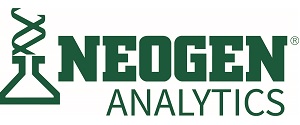If you find yourself looking in multiple places to retrieve and compile food safety data for reporting, audit-prep, and analysis, then your data is likely "in jail."
Where is your food safety data? This means your environmental diagnostics, product sample results, sanitation work order completions, corrective actions, root cause analysis records, lab result, certificates of analysis, and the like.
- Are they collected and stored manually?
- Are they stored in multiple applications, spreadsheets, emails—or even physical rooms where three-ring binders full of paper records are stored?
- Do you need to physically go to a location to retrieve information or search for an email attachment?
- Do you need to open multiple applications and download, combine, or manually arrange records to meet your needs?
If any of the above scenarios sound familiar, then you are most definitely in food safety data jail.
How Did This Happen?
Management of each testing and sanitation program has traditionally been built as a distinct, independent process. Think about your organization. The process for scheduling and executing environmental swabs is likely an entirely different process, managed with different information assets, as compared to the execution of your master sanitation schedule—which, in turn, is likely different than the process for collecting product samples for microbiology and quality testing.
This results in the unintended creation of "data silos." Data silos are basically data sets, created from these distinct and independently managed processes, that are collected and stored in their unique, respective places.
Data silos, therefore, are the equivalent of keeping your data "in jail."
Like a prisoner, the data have no freedom of movement. They cannot be easily mingled and correlated. This limits your ability to see cause/effect relationships, which then makes it difficult to achieve the real promise of a digitally transformed and automated food safety program.
We end up in data jail, typically, due to the original mandate that drove food safety data collection in the first place—compliance.
How Do We Break Out of Food Safety Data Jail?
Breaking out of data silos starts with a new mindset. While compliance must be achieved, the mandate and priority should be placed on both compliance and prevention.
Adopting this new mindset yields a significant, new opportunity to think differently about food safety data and how it is collected, stored, and used. For example, what if data were collected, stored, and used to impact compliance mandates and reduce the time-to-information to respond to anomalies before they impact operations?
Adopt a "Unified" Data Platform to Digitally Automate the Jailbreak
Instead of assigning people to manually enter diagnostic results from the lab into a spreadsheet, imagine if diagnostic results were collected automatically via a digital connection between the lab and your digital platform. Now, imagine if the automatic feed of diagnostic results could be analyzed by the digital platform and automatically trigger the launch of the appropriate corrective actions if a non-conforming result were detected. Even further, imagine if this type of automation could also alert you to each instance as opposed to having to go find it in whatever data silo it used to be stored.
In other words, why shouldn't the data find you (freedom of data) as opposed to you having to go find it (in data jail)?
Another example: Imagine if you could see a trend emerging before a costly action must be taken (maybe from troublesome ATP results, or maybe from a test location that continually yields positive hits). Collecting and making data accessible to analytics and data visualization methods can yield a more proactive result and head off issues before they cause production delays and shutdowns. Reducing the number of clean-in-place (CIP)/clean-out-of-place (COP) procedures, for instance, can deliver significant cost and resource savings if the data trends can be accessed, analyzed, and acted on in a timely fashion. If data that points to these trends is collected and stored in spreadsheets, paper binders, and email attachments that must be accessed individually, how can that data be leveraged to yield this result?
How to Justify the Investment in a Data Jailbreak
The financial implications of reducing CIP/COP-induced production delays or downtime by just 90 minutes per week can be dramatic once the week-after-week impact is added up. This is one of the most unaddressed costs that food manufacturers and processors face. It often goes undetected as teams focus on problem-solving in the moment and chalk up downtime as simply an accepted "cost of doing business." (See our related whitepaper for more on calculating ROI from an investment in digital food safety management technology.)
In a digitally transformed scenario, management reports are created automatically as the lab and workflow data is communicated within the digital platform. As data changes, alerts are automatically sent to stakeholders, accelerating the response and launch of corrective actions and drastically reducing the risk of adverse events. This improved time-to-information yields a far greater opportunity to be proactive and preventative, rather than reactive.
Progressive organizations that are "leaning in" to digital transformation ask themselves these organizational and cultural questions:
- What can our team do with the time we were spending on working in spreadsheets and pivot tables?
- Is there a new tradeoff that would enable our organization to use the scientific training and backgrounds of the team more effectively?
- Could the time spent within legacy methods of manually collecting and formatting data be traded with analyzing the data and putting more emphasis on new innovations, corrective actions, investigative testing, root cause analysis, and, ultimately, the preventative/proactive result we all desire?
To see how Neogen Analytics can transform your data, schedule your personalized demo now.


